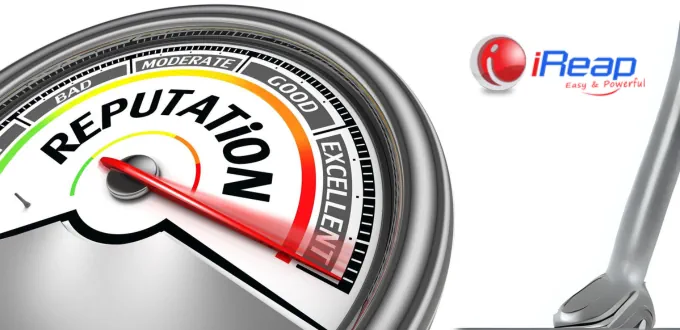
The frozen food industry in Indonesia presents vast opportunities and lucrative prospects. Frozen foods have become a favorite among many due to their convenience and long shelf life. If you are interested in becoming a frozen food distributor, follow the steps outlined in this iReap guide.
9 Essential Steps to Become a Frozen Food Distributor
1. Understand the Frozen Food Business Model
Before embarking on any business venture, you must first understand its operational model. The frozen food business offers flexible pathways depending on how you wish to begin.
Will you produce the frozen goods yourself—prepare the ingredients, process them hygienically, freeze, package, label, store, and distribute them? Or will you act solely as a distributor, marketing and supplying frozen products to sellers, retailers, and end customers?
If you choose to manufacture your own products, you must secure raw materials, ensure proper hygienic processing methods, develop your recipe, choose the right freezing techniques, handle packaging and labeling, and plan your distribution strategy.
If you prefer to become a distributor, simply find reliable suppliers or manufacturers who will provide you with quality products to sell. For guidance on choosing the right supplier, read: Tips on Choosing a Trusted Frozen Food Supplier.
2. Identify High-Demand Products
Once you understand your business model, the next step is identifying products with strong market demand.
Focusing on best-selling items will help accelerate product turnover and allow you to gain profit more quickly during your early stages. Factors that influence a product’s popularity include quality, taste, and price. Therefore, choose only products with guaranteed quality, excellent flavor, and reasonable pricing.
3. Learn Proper Frozen Food Storage Methods
As a frozen food distributor, you must know how to store products correctly to maintain freshness and quality. Common and recommended storage practices include:
- Ensure all packaging is intact, unopened, and durable enough to withstand low temperatures.
- Use dedicated freezers capable of maintaining temperatures below -18°C.
- Organize products by placing items with the longest expiration dates at the back and those with nearer dates at the front.
- Arrange products neatly to ensure proper air circulation and maintain consistent quality.

4. Prepare Capital and Operational Budgets
A well-planned budget is crucial for any business. A lack of adequate funds may force a new business to shut down prematurely.
When drafting your capital and operational budgets, calculate as precisely as possible the costs for purchasing products, storage, transportation, promotion, and other operational expenses.
Example of Capital Budget Calculation:
Product Purchasing Costs:
- Purchase price of Product A: Rp 10,000 per unit
- Purchase price of Product B: Rp 15,000 per unit
- Units purchased: 100 units
- Total purchasing cost = (10,000 × 100) + (15,000 × 100) = Rp 2,500,000
Storage Costs:
- Warehouse rental: Rp 3,000,000 per month
- Electricity for cold storage: Rp 1,000,000 per month
- Total storage cost = Rp 4,000,000
Operational Budget Example:
Transportation Costs:
- Cost per delivery: Rp 500,000
- Deliveries per month: 4
- Total transportation cost = Rp 2,000,000
Promotion Costs:
- Online advertising: Rp 1,000,000 per month
- Brochure printing: Rp 500,000 per month
- Total promotion cost = Rp 1,500,000
Other Operational Costs:
- Employee salaries: Rp 8,000,000 per month
- Utilities: Rp 2,000,000 per month
- Security expenses: Rp 1,000,000 per month
- Total miscellaneous operational costs = Rp 11,000,000
By summing all the above expenses, you can determine the total monthly capital and operational budget required to sustain your newly established frozen food business. A detailed calculation also allows better financial management and minimizes the risk of unexpected future expenses. For more guidance, refer to the article: Comprehensive Guide to Calculating Frozen Food Business Capital.
5. Prepare Business Permits
Like any other business, becoming a frozen food distributor requires proper business licensing. The required documents include:
- Trade Business License (SIUP)
- Company Registration Certificate (TDP)
- Halal Certification from MUI
- Home Industry Product Certificate (PIRT)
- Taxpayer Identification Number (NPWP)
- Business Identification Number (NIB)
Ensuring compliance with all licensing requirements not only strengthens your business’ credibility but also reassures customers of your product’s safety and legality. Always check and renew permits as needed to avoid legal complications.
6. Determine the Cost of Goods Sold for Your Target Market
Calculate the Cost of Goods Sold (COGS) appropriately based on your target audience to ensure your pricing remains competitive while securing a healthy profit margin.
For a deeper understanding of COGS and pricing strategies, explore:
- How to Calculate COGS and Selling Price Easily
- How to Determine and Calculate Selling Prices
- How to Calculate Product Selling Price for Maximum Profit
7. Manage Product Inventory with the iReap Android POS App
Efficient inventory management is essential in the frozen food business. Use an Android POS application like iReap POS to track inventory, update stock levels, and streamline sales operations.

8. Define Your Sales System & Product Packaging
Choose a sales method that aligns with your business—whether direct selling, dropshipping, or becoming a reseller.
Develop attractive packaging that strengthens brand recognition and appeals to customers. Good packaging both protects the product and elevates its market appeal.
9. Promote Your Frozen Food Business
Promotion is key to increasing sales. Develop effective marketing strategies using social media, compelling images or videos, giveaways, or special discounts.
Consider implementing a loyalty program to encourage repeat purchases and strengthen customer loyalty.
Now that you understand how to become a frozen food distributor, start applying the steps above. To simplify your business operations, use the iReap POS Pro Android cashier application to record transactions and manage inventory efficiently.



